
Scholarly Literature
This is a database of scholarly literature that concentrates currently on natural and engineered selfish genetic elements (gene drives). The latest are shown here.
Disclaimer>

|
A unifying approach to gene driveP. Verma, R. Reeves and C. S. Gokhale, bioRxiv, 2020.02.28.970103. 2020.
Synthetic gene drive technologies aim to spread transgenic constructs into wild populations even when they impose organismal fitness disadvantages. The properties of gene drive constructs are diverse and depend on their molecular construction, and differential selection pressure ... Keywords: Aedes aegypti, optimal control, wolbachia |

|
Evaluating the Probability of CRISPR-based Gene Drive Contaminating Another SpeciesV. Courtier-Orgogozo, A. Danchin, P.-H. Gouyon and C. Boëte, Evolutionary Applications, Early Online. 2020.
he probability D that a given CRISPR-based gene drive element contaminates another, non-target species can be estimated by the following Drive Risk Assessment Quantitative Estimate (DRAQUE) Equation: D = (hyb + transf).express.cut.flank.immune.nonextinct with ... Keywords: Aedes aegypti, optimal control, wolbachia |
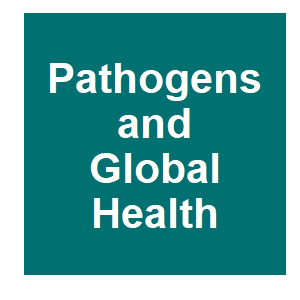
|
Public health concerns over gene-drive mosquitoes: will future use of gene-drive snails for schistosomiasis control gain increased level of community acceptance?D. O. Famakinde, Pathogens and Global Health, 2020.
With the advent of CRISPR (clustered regularly interspaced short palindromic repeat)-based gene drive, present genetic research in schistosomiasis vector control envisages the breeding and release of transgenic schistosome-resistant (TSR) snail vectors to curb the spread of the ... Keywords: Aedes aegypti, optimal control, wolbachia |
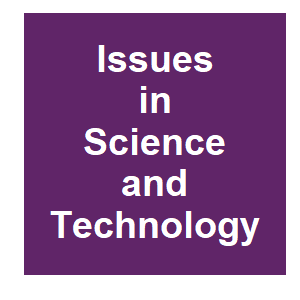
|
Gene Drives: New and ImprovedR. M. Friedman, J. M. Marshall and O. S. Akbari, Issues in Science and Technology, 36:1-7. 2020.
Our goal here is to describe the various options under development in nontechnical terms for a policy-making audience, review how far along each is, and examine the broader context of how this new suite of technologies compares with other available alternatives. Early engagement ... Keywords: Aedes aegypti, optimal control, wolbachia |

|
Genome engineering in insects: focus on the CRISPR/Cas9 systemHillary, V. Edwin Ceasar, Stanislaus Antony Ignacimuthu, S., Genome Engineering via CRISPR-Cas9 System, 2020.
Genome engineering is a precise tool used to alter the genome of desired organism. Zinc finger nuclease (ZFN), transcription activator-like effector nucleases (TALENs) and clustered regularly interspaced short palindromic repeats (CRISPR), and the CRISPR-associated RNA guided ... Keywords: Aedes aegypti, optimal control, wolbachia |

|
Modeling the impacts of a simple meiotic gene drive on small, homeostatic populationsK. R. Pilkiewicz and M. L. Mayo, Physical Review E, 101:11. 2020.
Gene drives offer unprecedented control over the fate of natural ecosystems by leveraging non-Mendelian inheritance mechanisms to proliferate synthetic genes across wild populations. However, these benefits are offset by a need to avoid the potentially disastrous consequences of ... Keywords: Aedes aegypti, optimal control, wolbachia |

|
Dramatically diverse Schizosaccharomyces pombe wtf meiotic drivers all display high gamete-killing efficiencyM. A. Bravo Núñez, I. M. Sabbarini, M. T. Eickbush, Y. Liang, J. J. Lange, A. M. Kent and S. E. Zanders, PLOS Genetics, 16:e1008350. 2020.
During gametogenesis, the two gene copies at a given locus, known as alleles, are each transmitted to 50% of the gametes (e.g. sperm). However, some alleles cheat so that they are found in more than the expected 50% of gametes, often at the expense of fertility. This selfish ... Keywords: Aedes aegypti, optimal control, wolbachia |
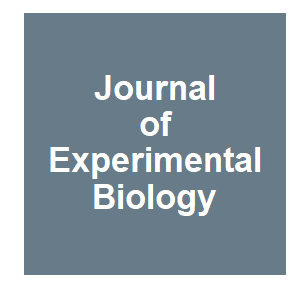
|
Progress towards engineering gene drives for population controlR. R. Raban, J. M. Marshall and O. S. Akbari, The Journal of Experimental Biology, 223:jeb208181. 2020.
Vector-borne diseases, such as dengue, Zika and malaria, are a major cause of morbidity and mortality worldwide. These diseases have proven difficult to control and currently available management tools are insufficient to eliminate them in many regions. Gene drives have the ... Keywords: Aedes aegypti, optimal control, wolbachia |

|
Vector genetics, insecticide resistance and gene drives: an agent-based modeling approach to evaluate malaria transmission and eliminationP. Selvaraj, E. A. Wenger, D. Bridenbecker, N. Windbichler, J. R. Russell, J. Gerardin, C. A. Bever and M. Nikolov, bioRxiv, 2020.01.27.920421. 2020.
Vector control has been a key component in the fight against malaria for decades, and chemical insecticides are critical to the success of vector control programs worldwide. However, increasing resistance to insecticides threatens to undermine these efforts. Understanding the ... Keywords: Aedes aegypti, optimal control, wolbachia |
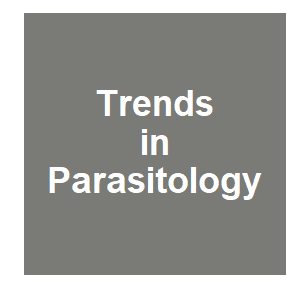
|
Phased Conditional Approach for Mosquito Management Using Sterile Insect TechniqueJ. Bouyer, H. Yamada, R. Pereira, K. Bourtzis and M. J. B. Vreysen, Trends in Parasitology, 2020.
Mosquito-borne diseases represent a major threat to humankind. Recently, the incidence of malaria has stopped decreasing while that of dengue is increasing exponentially. Alternative mosquito-control methods are urgently needed. The sterile insect technique (SIT) has seen ... Keywords: Aedes aegypti, optimal control, wolbachia |
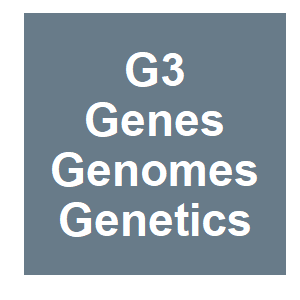
|
Genetic Variation and Potential for Resistance Development to the tTA Overexpression Lethal System in InsectsK. E. Knudsen, W. R. Reid, T. M. Barbour, L. M. Bowes, J. Duncan, E. Philpott, S. Potter and M. J. Scott, G3: Genes|Genomes|Genetics, Early Online:g3.400990.2020. 2020.
Release of insect pests carrying the dominant lethal tetracycline transactivator (tTA) overexpression system has been proposed as a means for population suppression. High levels of the tTA transcription factor are thought to be toxic due to either transcriptional squelching or ... Keywords: Aedes aegypti, optimal control, wolbachia |

|
Engineered symbionts activate honey bee immunity and limit pathogensP. Leonard Sean, J. E. Powell, J. Perutka, P. Geng, C. Heckmann Luke, D. Horak Richard, W. Davies Bryan, D. Ellington Andrew, E. Barrick Jeffrey and A. Moran Nancy, Science, 367:573-576. 2020.
Honey bees are essential pollinators threatened by colony losses linked to the spread of parasites and pathogens. Here, we report a new approach for manipulating bee gene expression and protecting bee health. We engineered a symbiotic bee gut bacterium, Snodgrassella alvi, to ... Keywords: Aedes aegypti, optimal control, wolbachia |
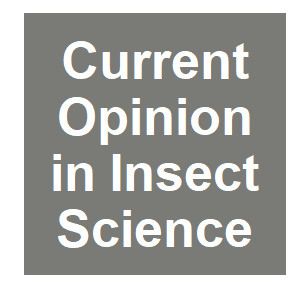
|
Gene technologies in weed management: a technical feasibility analysisN. Kumaran, A. Choudhary, M. Legros, A. W. Sheppard, L. G. Barrett, D. M. Gardiner and S. Raghu, Current Opinion in Insect Science, 38:6-14. 2020.
With the advent of new genetic technologies such as gene silencing and gene drive, efforts to develop additional management tools for weed management is gaining significant momentum. These technologies promise novel ways to develop sustainable weed control options because gene ... Keywords: Aedes aegypti, optimal control, wolbachia |

|
An introgressed gene causes meiotic drive in Neurospora sitophilaJ. Svedberg, A. A. Vogan, N. A. Rhoades, D. Sarmarajeewa, D. J. Jacobson, M. Lascoux, T. M. Hammond and H. Johannesson, bioRxiv, 2020.01.29.923946. 2020.
In this study, we identify the gene responsible for spore killing in Sk-1 by generating both long and short-read genomic data and by using these data to perform a genome wide association test. By phylogenetic analysis, we demonstrate that the gene is likely to have been ... Keywords: Aedes aegypti, optimal control, wolbachia |
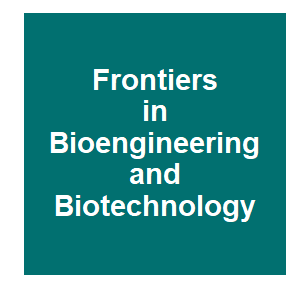
|
First Field Release of a Genetically Engineered, Self-Limiting Agricultural Pest Insect: Evaluating Its Potential for Future Crop ProtectionA. M. Shelton, S. J. Long, A. S. Walker, M. Bolton, H. L. Collins, L. Revuelta, L. M. Johnson and N. I. Morrison, Frontiers in Bioengineering and Biotechnology, 7:1-15. 2020.
Alternative, biologically-based approaches for pest management are sorely needed and one approach is to use genetically engineered insects. Herein we describe a series of integrated field, laboratory and modeling studies with the diamondback moth, Plutella xylostella, a serious ... Keywords: Aedes aegypti, optimal control, wolbachia |

|
Autosomal suppression and fitness costs of an old driving X chromosome in Drosophila testaceaG. Keais, S. Lu and S. Perlman, Journal of Evolutionary Biology, 2020.
Driving X chromosomes (XDs) are meiotic drivers that bias their own transmission through males by killing Y-bearing gametes. These chromosomes can in theory spread rapidly in populations and cause extinction, but many are found as balanced polymorphisms or as ?cryptic? XDs shut ... Keywords: Aedes aegypti, optimal control, wolbachia |

|
Public Opinion Towards Gene Drive as a Pest Control Approach for Biodiversity Conservation and the Association of Underlying WorldviewsE. A. MacDonald, J. Balanovic, E. D. Edwards, W. Abrahamse, B. Frame, A. Greenaway, R. Kannemeyer, N. Kirk, F. Medvecky, T. L. Milfont, J. C. Russell and D. M. Tompkins, Environmental Communication-a Journal of Nature and Culture, 15:1-16. 2020.
Synthetic gene drive approaches are nascent technologies with potential applicability for pest control for conservation purposes. Responsible science mandates that society be engaged in a dialogue over new technology, particularly where there exist global ramifications as with ... Keywords: Aedes aegypti, optimal control, wolbachia |

|
Public Opinion Towards Gene Drive as a Pest Control Approach for Biodiversity Conservation and the Association of Underlying WorldviewsE. A. MacDonald, J. Balanovic, E. D. Edwards, W. Abrahamse, B. Frame, A. Greenaway, R. Kannemeyer, N. Kirk, F. Medvecky, T. L. Milfont, J. C. Russell and D. M. Tompkins, Environmental Communication, 14:904-918. 2020.
Synthetic gene drive approaches are nascent technologies with potential applicability for pest control for conservation purposes. Responsible science mandates that society be engaged in a dialogue over new technology, particularly where there exist global ramifications as with ... Keywords: Aedes aegypti, optimal control, wolbachia |
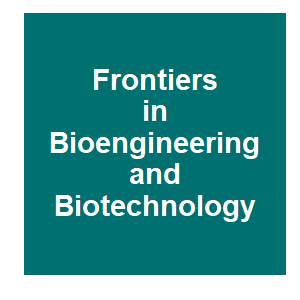
|
Regulation of GM Organisms for Invasive Species ControlH. J. Mitchell and D. Bartsch, Frontiers in Bioengineering and Biotechnology, 7:1-11. 2020.
Invasive species can cause significant harm to the environment, agriculture, and human health, but there are often very limited tools available to control their populations. Gene drives (GD) have been proposed as a new tool which could be used to control or eliminate such ... Keywords: Aedes aegypti, optimal control, wolbachia |

|
A transcomplementing gene drive provides a flexible platform for laboratory investigation and potential field deploymentV. López Del Amo, A. L. Bishop, H. M. Sánchez C, J. B. Bennett, X. Feng, J. M. Marshall, E. Bier and V. M. Gantz, Nature Communications, 11:352. 2020.
CRISPR-based gene drives can spread through wild populations by biasing their own transmission above the 50% value predicted by Mendelian inheritance. These technologies offer population-engineering solutions for combating vector-borne diseases, managing crop pests, and ... Keywords: Aedes aegypti, optimal control, wolbachia |

Contact
David O’Brochta
Foundation for the
National Institutes of Health
geneconvenevi@fnih.org
RSS

